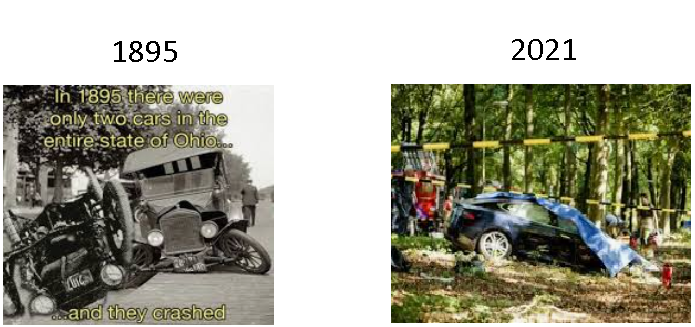"Addressing the Challenges of Vehicle Safety: From Human Error to Mathematical Solutions"

By Ilan Levy.
Throughout history, humans have always sought ways to travel faster and transport goods over longer distances.
The invention of riding animals allowed people to travel great distances in a short amount of time. However, the most significant change came in 1769 with the invention of the first car, which replaced horses on the roads. While there is debate over the first recorded accident in the world, it is widely agreed upon that most accidents are caused by human error.
In 1903, Mary Anderson invented the first safety system for vehicles, focusing on improving the driver's vision. However, if people had known the number of deaths that would result from cars, they may have rejected the idea altogether. The key to reducing accidents lies in differentiating between types of safety systems and addressing the specific dangers and their causes.
Volvo invented the electronic stability system, which automatically activates the brakes to prevent loss of control. However, this system is expensive and only available in some new trucks, meaning it only slightly reduces risks. Companies like Mobileye and Tesla have introduced computer vision systems that improve safety by keeping the vehicle on track and maintaining a safe distance from other vehicles.
Despite significant investment in technological solutions, no existing systems are effective when the driver's field of vision is obstructed. This obstacle, led to the development of a M-adas system that considers various factors like road topography, vehicle dimensions, and cargo load.
By incorporating artificial intelligence, this system has produced better results than expected. Calculating risks for insurers is challenging since accidents cannot be easily converted into a financial formula. Statistical calculations often do not consider individual risks, making it difficult to predict accident likelihood accurately.
Rollover accidents often occur due to unconscious driving, so adjusting speed before entering bends can significantly reduce the risks. Careful accident investigation helps identify causes and risk assessment for preventing future accidents. It is crucial to focus on finding solutions to the mathematical problems that cause accidents. This approach benefits drivers by improving safety systems and addressing specific dangers. However, it's important to acknowledge that accidents still occur due to human error and the gap between vehicle speed and safe driving limits.
One major challenge is the obstruction of the driver's field of vision, which renders existing safety systems ineffective. To overcome this, M-adas system has been developed and takes into account factors such as road topography, vehicle dimensions, and cargo load, driver experience and working time and areas. By incorporating artificial intelligence, this system has shown promising results in improving safety. Insurance policies currently rely on criteria that may not provide accurate risk assessment.
A thorough analysis of the driver's behavior in routine situations can provide better data for assessing risk levels. This data can also serve as evidence in accident investigations and legal proceedings. Ultimately, the goal is to find solutions to the mathematical problems that contribute to accidents. By doing so, we can better protect drivers, law enforcement, and insurers. It's essential to consider the benefits of preventing accidents, such as reducing fatalities, financial damages, and the need for accident reconstruction based on tire marks and clues. In conclusion, while advancements in vehicle safety systems have been made, accidents still occur due to human factors and limitations.
By focusing on mathematical models and harnessing technology, we can work towards preventing accidents and creating a safer driving environment.
Drive Safe
